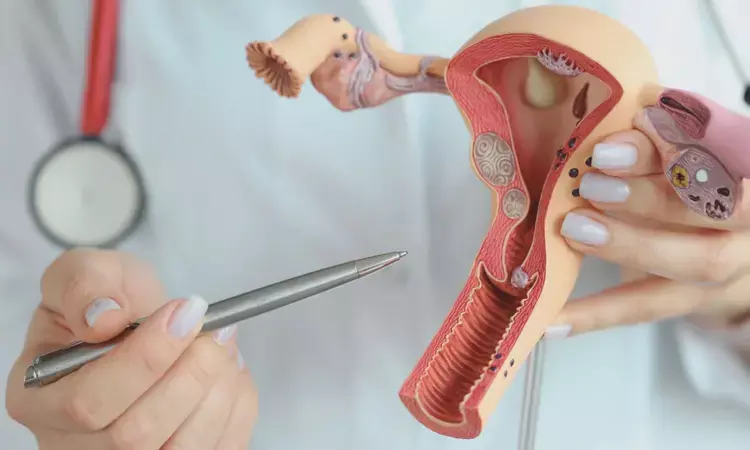- Home
- Medical news & Guidelines
- Anesthesiology
- Cardiology and CTVS
- Critical Care
- Dentistry
- Dermatology
- Diabetes and Endocrinology
- ENT
- Gastroenterology
- Medicine
- Nephrology
- Neurology
- Obstretics-Gynaecology
- Oncology
- Ophthalmology
- Orthopaedics
- Pediatrics-Neonatology
- Psychiatry
- Pulmonology
- Radiology
- Surgery
- Urology
- Laboratory Medicine
- Diet
- Nursing
- Paramedical
- Physiotherapy
- Health news
- Fact Check
- Bone Health Fact Check
- Brain Health Fact Check
- Cancer Related Fact Check
- Child Care Fact Check
- Dental and oral health fact check
- Diabetes and metabolic health fact check
- Diet and Nutrition Fact Check
- Eye and ENT Care Fact Check
- Fitness fact check
- Gut health fact check
- Heart health fact check
- Kidney health fact check
- Medical education fact check
- Men's health fact check
- Respiratory fact check
- Skin and hair care fact check
- Vaccine and Immunization fact check
- Women's health fact check
- AYUSH
- State News
- Andaman and Nicobar Islands
- Andhra Pradesh
- Arunachal Pradesh
- Assam
- Bihar
- Chandigarh
- Chattisgarh
- Dadra and Nagar Haveli
- Daman and Diu
- Delhi
- Goa
- Gujarat
- Haryana
- Himachal Pradesh
- Jammu & Kashmir
- Jharkhand
- Karnataka
- Kerala
- Ladakh
- Lakshadweep
- Madhya Pradesh
- Maharashtra
- Manipur
- Meghalaya
- Mizoram
- Nagaland
- Odisha
- Puducherry
- Punjab
- Rajasthan
- Sikkim
- Tamil Nadu
- Telangana
- Tripura
- Uttar Pradesh
- Uttrakhand
- West Bengal
- Medical Education
- Industry
High Prevalence of Endometrial Polyps in Postmenopausal Women with Prolapse, Reveals study

USA: A recent study published in the American Journal of Obstetrics and Gynecology reveals a high prevalence of endometrial polyps among asymptomatic postmenopausal women undergoing hysterectomy for uterovaginal prolapse. The findings highlight the significance of identifying and managing endometrial polyps in this population, particularly given certain risk factors.
"Women undergoing menopausal hormone therapy and those with a high body mass index (BMI) are at increased risk of developing endometrial polyps. Although the risk of malignancy is currently considered low, further research is needed to accurately assess the lifetime risk of these polyps. In the meantime, a watchful waiting approach may be advisable for asymptomatic polyps discovered incidentally," the researchers wrote.
Endometrial polyps, benign growths in the lining of the uterus, are commonly discovered incidentally during hysterectomy procedures performed for uterovaginal prolapse—a condition where the pelvic organs descend into the vaginal canal. Despite their frequent incidental discovery, these polyps are often asymptomatic in postmenopausal women, raising questions about their clinical significance and management.
According to the authors, the prevalence of endometrial polyps in asymptomatic postmenopausal women is not well-established, and there is a lack of clear clinical guidelines on their management. The degree to which these polyps warrant clinical concern remains uncertain. To fill this knowledge gap, Gabriela M. WEIGEL, Brown University/Women and Infants Hospital, Providence, RI, and colleagues aimed to determine the prevalence of endometrial polyps in asymptomatic postmenopausal women (those without bleeding) and assess the risk factors linked to their occurrence.
For this purpose, the researchers conducted a cross-sectional study to evaluate the prevalence of endometrial polyps among asymptomatic, postmenopausal women undergoing hysterectomy for uterovaginal prolapse. Patients who were undergoing hysterectomy for other reasons, such as postmenopausal bleeding, were excluded.
The study involved a chart review of eligible patients treated at a single facility in Washington state between 2009 and 2018. The primary outcome was the detection of endometrial polyps through pathology reports. Following this, the study assessed risk factors related to polyp prevalence using both univariate analysis and multivariate regression.
The following were the key findings of the study:
- Of the 317 eligible women identified, endometrial polyps were identified in 33.4% of the women.
- The average polyp size and endometrial thickness were 13 +/- 10mm and 1.4 +/- 1.5mm.
- In most cases, 78% had solitary polyps.
- Premalignant and malignant lesions were found in 2 cases (1.89%); one had endometrial carcinoma, and one had endometrial intraepithelial neoplasia.
- Baseline clinical and demographic characteristics were similar between patients with and without endometrial polyps, including the presence of fibroids, endometriosis, and adenomyosis.
- Multivariate logistic regression showed that the presence of polyps was independently associated with high body mass index (OR 1.06) and use of menopausal hormone therapy (OR 1.67).
The findings showed that in asymptomatic postmenopausal women undergoing hysterectomy for prolapse, 33% had endometrial polyps upon pathology examination, with a low risk of malignancy. The presence of these polyps was linked to higher BMI and the use of menopausal hormone therapy.
Reference:
WEIGEL, G. M., BAISON, G. N., MIHALOV, L., & MUPOMBWA, T. (2024). Prevalence of and risk factors for endometrial polyps among asymptomatic postmenopausal women with uterovaginal prolapse. American Journal of Obstetrics and Gynecology. https://doi.org/10.1016/j.ajog.2024.08.001
Dr Kamal Kant Kohli-MBBS, DTCD- a chest specialist with more than 30 years of practice and a flair for writing clinical articles, Dr Kamal Kant Kohli joined Medical Dialogues as a Chief Editor of Medical News. Besides writing articles, as an editor, he proofreads and verifies all the medical content published on Medical Dialogues including those coming from journals, studies,medical conferences,guidelines etc. Email: drkohli@medicaldialogues.in. Contact no. 011-43720751


